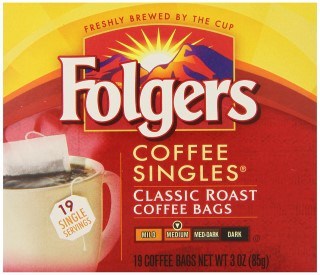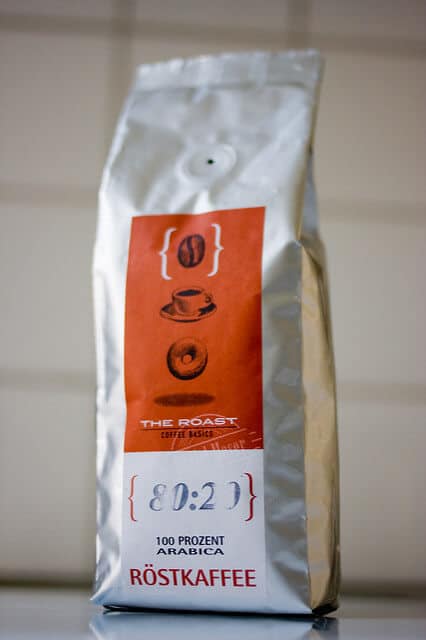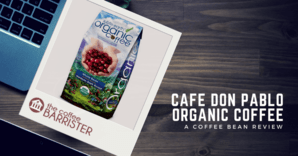
When you buy high-quality coffee, there’s a few factors that you need to consider. There is a very clear reason why cheap coffee from your local gas station tastes inferior compared to the perfectly brewed one from a third-wave café. Sure, part of it lies in the brewing techniques, but a bigger part lies in the quality of beans that’s being used.
In this article, we will be looking at 5 things to look for and 6 things to avoid when you buy quality.
5 Things to AVOID
1. Look at the Roast Date

When I worked for Peet’s Coffee and Tea, they maintained that coffee is freshest within 2 weeks of the roast date. Other factors like the bag and if there is there is a one-way valve is important too, but you want to look for a roast date within 2 weeks.
Searching for the roast date might discourage some, but there are ways to ensure this freshness with ease.
One easy solution to get fresh, quality coffee is to buy local. My favorite local coffee roaster roasts every Monday and Thursday, so I know that if I buy on a Tuesday or Friday afternoon, I’ll get the freshest coffee available. Even large industrial roasters will tell you the roasting dates on their website, and some will even roast when you order, or ship directly after a batch is roasted.
2. Buy Arabica Beans

100% Arabica Beans
Photo from Flickr
There are two main species of coffee cultivated for commercial use; Arabica and Robusta. The species is often used as a marker of quality.
In general, Arabica coffee is considered to be better tasting with a softer taste that matches characteristics of the soil and climate that they’re typically grown. Arabica is possibly the oldest cultivated species of coffee, but it is harder to grow (higher altitude) and requires a specific growing climate. A vast majority of coffee beans are now Arabica.
Robusta beans have a harsher and more acidic taste. But, since Robusta can be grown more easily, it is cheaper in price and easier to cultivate. Sometimes Robusta is used for espresso where the stronger tastes and higher caffeine contents fit the taste, but this is usually still only in blends.
Because of better industry practices, most coffee is now Arabica, and it is becoming increasingly rare to find Robusta. However, some cheaper blends will mix in Robusta beans to decrease cost. This can make for an acidic, stringent and metallic taste. Look for coffees that mark themselves as “100% Arabica beans” or something similar, so you know you’re getting the best tasting beans.
3. Make Sure The Coffee Is Traceable
If coffee is traceable, it means it comes directly from a farm in the country of origin. Inexpensive coffees will blend together whatever they can get – some coffee from Africa, some from South America, some from Indonesia – and this can reduce the quality if the blends are not created around a tasting profile.
Traceability is important because it means you will be getting coffee that can be tracked to the area it was grown. This will make the coffee a little more expensive, but it also means that the farmers are getting compensated for their work and that the coffee will match the flavor profile of the area it comes from.
If a roaster is proud to put the country of origin on the bag, it’s a good sign that the coffee is traceable and quality. Other things to look for are if it is Rainforest Alliance, this means that the coffee comes from a designated farm and environmentally and economically friendly.
4. Pay Attention To The Bag
For me, quality comes from a full-bodied, dark roast, but to others, it might be a crisp, fruity light roast. The type of roast is important to look for when looking quality coffee and it is usually listed on the front of the bag.
Roasting can get a little tricky. However, and certain varieties of coffee do better with different roasting profiles. For example, Columbian coffees and coffees from Sulawesi arguably do better with a lighter roast whereas some African and Indonesian coffees do better with a dark roast. While it’s not a hard-and-fast rule, in general these have become standard.
Other things to look for are the tasting notes. If the coffee comes from a reputable roaster, the bag will have professional tasting notes. These are usually single words that correspond to a distinct taste like “cherry”, “earthy”, “chocolate” or “citrus” to name a few. If a roaster does not give tasting notes, it’s a good indication that the coffee is thrown together from whatever beans they could find.
By looking at the type of roast and tasting notes, as well as where the coffee is sourced from, you can have an idea of what the expected flavor will be. This is a good way to find quality coffee and to determine whether the roaster knows their own product.
5. Look For Whether The Coffee Is Single-Origin or Blended

Coffee can come in two different varieties: single-origin or blend.
A blend will take beans from a single region, such as South America, or multiple regions, and mix them together, usually in an attempt to make a particular tasting profile. Blends made by reputable roasters are typically more complex and comes with several layers of taste, something that single-origin beans cannot create.
The term single-origin is broadly used to refer to coffees that are produced by a single farm or single group of farms from a small geographical area. You’re probably familiar with terms like La Minita, Yirgacheffe, Sidamo or Mocha Java – these are all terms that show a single-origin bean. Single-origin coffees will have a specific taste that is usually consistent. Read our glossary page for more information.
6 Things to Look FOR
Note that we know what to look for when buying quality coffee, here’s a list of things to avoid:
- Make sure the coffee comes in a valve-sealed bag.
- Look for paper packaging and containers (avoid plastic and metallic ones).
- Look for coffee with marked tasting notes, so you know what flavors to expect.
- Look for desirable notes like “cherry”, “chocolate”, or “citrus”.
(avoid “tobacco” or “tar” – they’re basically telling you the coffee is over-roasted) - Go for whole coffee beans, they last longer!
- Look for properly stored coffee, ones that’re not kept in a fridge or out in the open.
Overall, by following this article’s guidelines on what to look for and avoid, you can be sure that each and every single cup will offer you the perfect taste. Remember to look for fresh coffee that’s roasted within 2 weeks, Arabica bean, traceability, expected flavoring notes, and the origin that’s marked on the bag.





